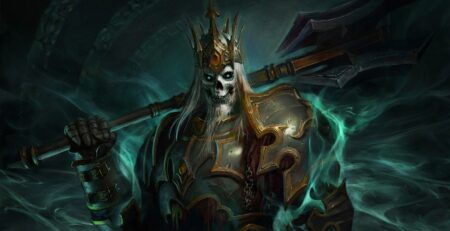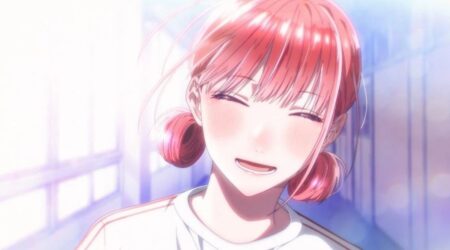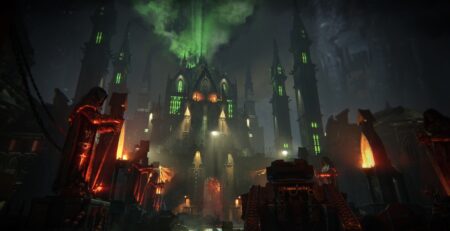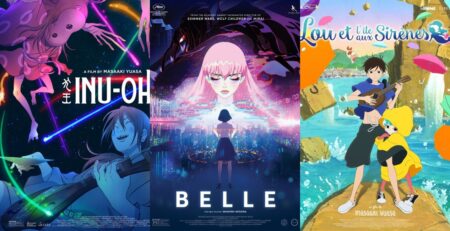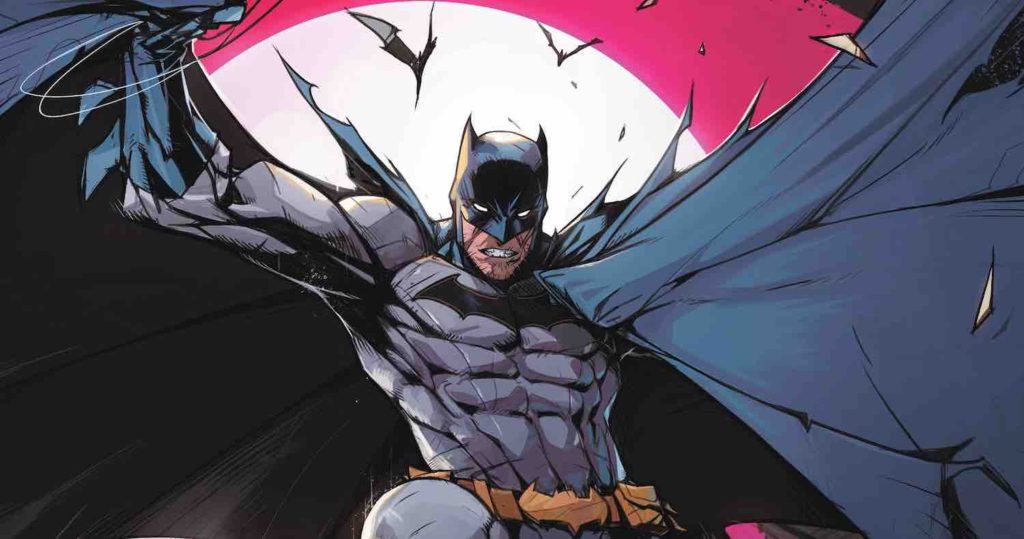
Batman: Urban Legends #1 is an anthology comic book published by DC. This is a monthly series containing four separate stories. Whilst Batman is the title characters, many other heroes and villains are put in the spotlight.
Red Hood and Batman star in “Cheer Part 1″ (of 6). Written by Chip Zdarsky with art by Eddy Barrows and Eber Ferreira, whilst the flashback sequence is by Marcus To. Colour art by Adriano Lucas and letters by Becca Carey. Harley Quinn and Poison Ivy are in “New Roots.” Written by Stephanie Phillips with art by Laura Braga. The colourist is Ivan Plascencia and Deron Bennett is on letters. The Outsiders appear in “The Caretaker Part 1″ (of 3). Written by Brandon Thomas with art by Max Dunbar. Colours from Luis Guerrero and letters by Steve Wands. The Grifter is the lead in “The Long Con Part 1” (of 5). Written by Matthew Rosenberg with art by Ryan Benjamin. Colours by Antonio Fabela and letters by Saida Temofonte.
Batman: Urban Legends #1 is an awesome anthology series. There are four very different stories within the 70 pages, some of which a reader may not have discovered if they were in their own book. The stories are gripping and easy to get invested in, with powerful and stunning art.
Cheer Part 1
In “Cheer,” Gotham has fallen under the clutches of a brutal and deadly new drug called Cheerdrops. Both Red Hood and Batman are on the case, trying to find out who is behind its creation, but working separately. As Red Hood works on a lead, he finds a young child in distress. Worried about what will happen to the boy if he leaves him, he considers it his personal mission to keep him safe.
This story is heavily centred around Jason Todd, with Batman barely appearing in its pages. Zdarsky delves heavily into Jason’s personality and delivers a fantastic character-based plot. It is clear that Jason fears the wrath of his adoptive father, using rubber bullets that prevent him from killing those he comes up against. Not only that, but there is a side to Red Hood that verges on vulnerability. How he acts around the kid is beautiful to read, with some stunning dialogue on display.
“Cheer Part 1” doesn’t just explore Jason in the present story, as there are flashbacks that show him as a child, still training as a Robin. This appears to take place sometime after being adopted by Bruce Wayne. Within this flashback, the reader can see Jason’s first up-close experience with firearms, hinting at his future proficiency with the weapons. But there is also some resentment towards Dick Grayson, as the first Robin appears to still be held on a pedestal by Bruce. The conversations between Bruce, Alfred, and Jason feel new despite this story being tread upon numerous times.
There isn’t just character development in “Cheer Part 1”. The plot is a fantastic mystery being stretched out on two fronts, the methods of the two protagonists opposing each other. The action scenes are exciting and there are surprising reveals.
The art by all involved is brilliant. The individual styles of the creators are distinctive but work well together. The tonal shifts of the comic are prevalent through the art. When out on the streets, Red Hood is a terrifying force of nature, his costume fantastically rendered by Barrows and Ferreira. The mask cuts off much of his emotions, making him hard to read. But when he is with the child, the pain and heartbreak on Jason’s face soften his persona. He is frantic and scared, not for him but for the child. Some of the emotional moments scripted by Zdarsky only shine because of how they are portrayed visually.
Batman is also awesome. Tall and broad, with a cape that floats deftly behind him, his presence is like that of a great white shark in the ocean. You want Red Hood to avoid him because of what will happen when they meet. Something both present-day artists brilliantly accomplish is to create a haunting, creepy effect that Cheerdrops has on those that consume it.
The flashback art is a noticeable change. There are fewer shadows within To’s pages as if to suggest that the darkness hasn’t truly set in yet. But they do linger around Batman, progressively increasing as the flashback proceeds.
The colours are stunning in both stories. Lucas transitions perfectly between the timeframes, adapting to each artist’s style. Red Hood is this crimson blot within the darkness and smog of Gotham. The shade on his costume is rich and stunning. But this juxtaposition occurs in the flashback too. The greys, silvers and blacks of the Batcave only differ in regards to Jason’s clothes. Instead, he wears the trademark red and green of Robin. Inside the room where Red Hood meets the little boy, the page is filled with a sickly green. This is incredibly unsettling to see and somehow makes the scene inside even more disturbing.
The letters are superb, fitting in well with the tone and atmosphere of the first story. The SFX looks unique within this comic, dynamically affecting the actions causing them.
As the first story of Batman: Urban Legends #1, “Cheer Part 1” sets a high standard. Red Hood is written as well here as he is in any other of his iconic comics. A fantastic issue that is in-depth, intense and hard-hitting, the readers are immediately aware of the quality that these tales will have. .
New Roots
“New Roots” solely contains Harley Quinn and Poison Ivy. In a flashback, Ivy and Harley just finish a robbery. With the money, Ivy gifts her best friend a greenhouse where she can grow her own plants. But in the present, the mood is much darker. Harley is now alone and looking for a now missing Pamela.
This is another story where the characters are the key. There is an intriguing plot here, as Harley is searching for her friend. But what is important in “New Roots” is the chemistry between the characters. The way Phillips writes the then-villains draws an unexpectedly powerful response. What is evident is the profound devotion and love the pair have for each other. The tension builds throughout the story in an emotional and physical way. This chemistry blossoms in explosive fashion, cruelly happening too quickly. What follows for these two may be one of the most important arcs in their history.
The dialogue is beautiful. The captions in the present-day sequence demonstrate Harley’s intellect and creativity. While poetic in its structure, it still feels authentic to her voice. The same goes for the dialogue between Quinn and Ivy, their personality shines through the words written. Harley is excitable and sarcastic at all times, bouncing around like a puppy. Ivy is more thoughtful, her words direct and honest. The care and sheer adoration both women have for each other leaks out of every panel they share. Words are said that cannot be taken back, but that may not be a bad thing.
The connection between Harley and Ivy is also exhibited through the art. Braga’s use of facial expressions and body language is gorgeous. It is refreshing and so enjoyable to see both characters so happy in the flashback sequence. The looks they give each other, and the smiles that are returned show just how close they are. Without Ivy, in the modern-day sequence, Harley is much different. She is slumped and sad, uncomfortable to be alone in a place they cherished being together in. Their love is intensely physical as well as verbal. The passage of time is interesting as well, displayed by the costumes Harley wears in each sequence.
The colours present two vastly juxtaposed atmospheres. The scenes with Ivy and Harley together is painted in bright, golden light. Not only does it highlight the impact they have on each other, but it allows the characters themselves to glow. In the present day, that same greenhouse is dark, barren and faded. Even a figure as stunningly vibrant as Harley doesn’t exhibit those colours in the same way she did with her best friend.
The letters are crucial in a dialogue-heavy comic such as this. Luckily Bennett delivers perfectly, The layout of the caption boxes means that they are easy to follow, flowing beautifully.
“New Roots” is a prologue to an upcoming series, but it is also a heartfelt love letter. The relationship Harley and Ivy have is so strong, captured magnificently by both writer and artist. It is rare that love is presented so intensely in a comic, but this story shows a full and empty heart with raw emotion.
The story will continue in Harley Quinn and The Batman.
The Caretaker Part 1
The Outsiders are in Japan, on a mission with unknown objectives. In a flashback, Black Lightning, Metamorpho, and Katana are being chased down by violent warriors, intent on killing the swordsman. In the present, Black Lightning is alone trapped in a tower.
Another story that is told with a nonlinear timeline, this tale is more confusing than the others. The reader is aware that our heroes are in Japan, but why and how is not ascertained within this first part. It is very clear that Katana is the central target for their enemies, but again, her actions are unknown. The plot is perplexing, but “The Caretaker Part 1” may have the best action of the collection. The setting is unique and exciting and the varied powers between the heroes result in fascinating set pieces.
Katana may be the person that their foes despise, but Thomas actually tells the story through Black Lightning. He is the focal point of both time settings. He acts as the leader of the trio, though it is difficult to lead in the intense moments they are in. He is unflinching in his actions—the wellbeing of his friends and teammates is of utmost importance.
Katana is presented as the epic fighter that she is well known to be. Much of the mystery revolves around Tatsu’s involvement in the plot. She shoulders the responsibility of whatever it was she has done, something Black Lightning opposes. As for Metamorpho, he isn’t seen much in his natural state. His power is evident and how it is used as the miniseries continues will be interesting.
The art matches the madness of the plot but delivers the action effectively. The main fight scene takes place on the water, with the Outsiders and their opponents battling on speedboats. The landscape is unique but presented brilliantly by Dunbar. Katana drives while Black Lightning tries to knock the oncoming projectiles out of the air. Both of their abilities are illustrated fantastically, as is Metamorpho and his contortions.
The colours are also superb. Black Lighting’s abilities look cool because of the neon blue that hums from his electricity. The colours aid in trying to provide context to the story. The arrows that are fired at the heroes have a red aura around them. This implies that there is a mystical quality to these enemies, hinting that more is to be discovered about who they really are.
The narrative of this Outsiders story isn’t as compelling as the others inside Batman: Urban Legend #1, but it has suspense and mystery embedded within it. The art and choreography create an action-packed first part, but more exposition would be welcome to ground the reader before they read more. The three characters inside “The Caretaker Part 1″ are well-written, but the disjointed pace damages their impact. Out of all four stories in Batman: Urban Legends #1, this was the one that I struggled to connect with most.
The Long Con Part 1
Grifter has drifted into Gotham, trying to find his feet. He has found work as the bodyguard of Lucius Fox, but his appearance at an event only leads to disaster. After being sent home, he journeys to a bar. What Grifter doesn’t know is that the city’s protector is watching over him.
This story is similar in location and concept to “Cheer Part 1”, but is very different at the same time. The plot revolves around Grifter and his direct actions, as opposed to what’s happening around him. The setup of the miniseries initially seems straightforward, with Grifter acting like a bad bodyguard for Fox; however, his actions in the bar change the direction of the story completely.
Rosenberg is a great fit to be writing the character of Cole Cash. The writer approaches him in a similar way to how he captured Hawkeye in Tales of Suspense and Hawkeye: Freefall. Grifter is portrayed as a great fighter, but also a moron at times. During a confrontation with another character, it is clear that he is capable of improvising and adapting when faced with adversity. The dialogue results in both impressive and comedic character moments.
The art suits the tone of the story. Benjamin’s lines are scratchy, resulting in everything on the page looking gritty and sometimes uneven. It not only fits the world that Grifter has entered but also the design of the protagonist himself. The fight scene between him and another character has moments of both hilarity and ingenuity. The choreography is very unique among comics, as much of it is based on grappling and wrestling.
What is fantastic about every story in Batman: Urban Legends #1 is that they are all heavily character-based, focusing on varied individuals in grueling circumstances. The actions of each protagonist are what powers the story ahead, leading to dangerous and deadly consequences. They all show what these heroes are capable of and what their weaknesses are.
These characters can be used within this larger book as a springboard into their own story, which is the case with the Harley and Ivy section. Using Batman in the title utilizes the popularity of the character to draw attention to heroes and villains that may have missed out on their own comic. Batman isn’t even in two of the stories, and only has supporting roles in the two that he does feature in.
Batman: Urban Legends #1 is available where comics are sold.

